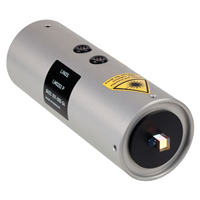Laser Modulators
Results:
89
Manufacturer
Series
Wavelength
Power (Watts)
Modulator Type
Aperture
Crystal Material
Crystal AR
Results remaining:89
Laser Modulators
Laser modulators are devices that enable the manipulation of an optical beam in a predefined way, depending on the type of modulator used. These devices play a vital role in laser systems by allowing the modulation of the laser beam's amplitude, phase, or frequency. The primary function of laser modulators is to control the characteristics of the laser beam within a specific wavelength range. This control can be achieved by filtering the laser beam through different types of modulators, including electro-optic, acousto-optic, and magneto-optic modulators. Electro-optic modulators operate based on the Pockels effect, which changes the refractive index of a crystal when subjected to an electric field. This change in refractive index causes the polarization of the laser beam to rotate, enabling the modulation of its amplitude. Acousto-optic modulators utilize the interaction between sound waves and light to diffract the laser beam, altering its intensity or phase. The sound waves propagate through a crystal, creating periodic variations in the refractive index, inducing diffraction of the incident laser beam. Magneto-optic modulators exploit the Faraday effect, similar to Faraday isolators, to modulate the polarization of the laser beam. By applying a magnetic field to a Faraday rotator, the polarization of the laser beam can be rotated, enabling modulation of its amplitude or phase. When selecting laser modulators, several parameters need to be considered. Firstly, the modulator type should be chosen based on the required modulation method, such as amplitude, phase, or frequency modulation. Wavelength filtering is another critical factor, ensuring that the modulator operates optimally within the desired wavelength range. Aperture size determines the maximum beam diameter that can be accommodated by the modulator without significant power loss or beam distortion. Other factors to consider may include modulation speed, power handling capabilities, and environmental robustness. Modulation speed indicates the maximum frequency at which the modulator can modulate the laser beam. Power handling capabilities indicate the maximum power levels that the modulator can handle without damage or significant performance degradation. Environmental robustness ensures that the modulator can withstand vibrations, humidity, and other external factors. In summary, laser modulators are essential components in laser systems that enable the manipulation of the optical beam in a predefined way. These modulators can be selected based on parameters such as type, wavelength compatibility, aperture size, modulation speed, power handling capabilities, and environmental robustness. They find applications in various laser systems, including telecommunications, scientific research, and laser material processing.



